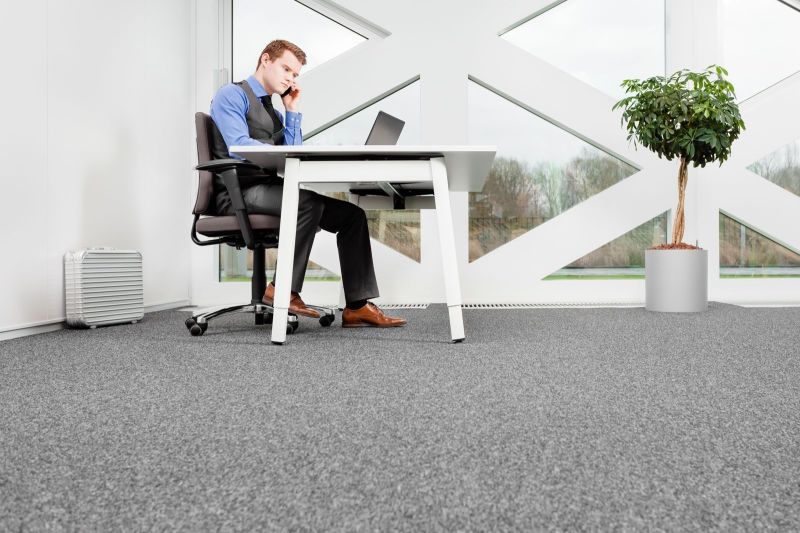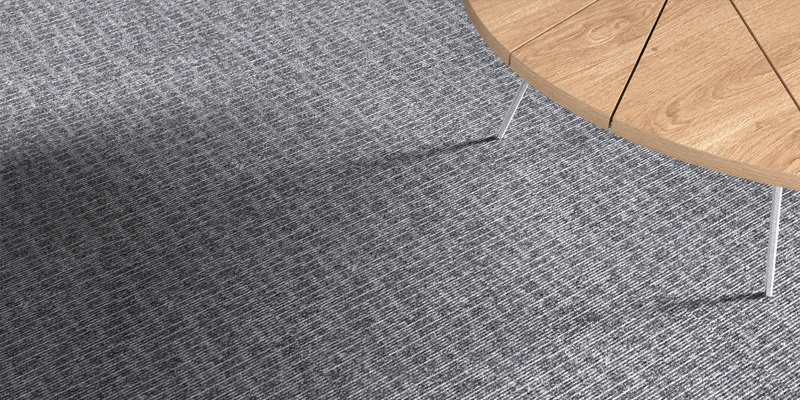Customer support
Do you have questions about our service, products or specific orders? Or would you like customised advice on a project design? We are here for you! Contact one of our employees directly. They can be reached on working days from 8 a.m. to 5 p.m.

Frequently Asked Questions (FAQ)
Do you have a question about our products, service or delivery? You may find the answer below among the frequently asked questions. Is your question not listed? Contact us and we will be happy to help you!
- Wide range of colors, designs and styles; Color / pattern and design tendencies make carpets an ideal element for creating dynamic furnishings that are not afraid to make a striking design statement in a room.
- Longevity and sustainability; A reduction in environmental pollution and an improvement in general properties can be achieved in every life cycle. Therefore, good quality carpeting plays an important role when it comes to reducing the environmental impact of your project.
- Promotes a healthy indoor climate; Studies have shown that textile flooring is much better able to absorb allergens than hard flooring. Every single carpet fibre catches particles and allergens when they fall on the floor. Just like with allergens, the textile floor covering binds the dust, which can then be completely removed by regular brushing/vacuuming and occasional thorough cleaning. Therefore, textile flooring is an excellent choice for projects where indoor air quality is important in various property segments.
- Improves room acoustics; Carpet offers extraordinary acoustic advantages and reduces noise, as it has a sound-absorbing effect and does not reflect the sounds, as is the case with hard surfaces.
- Promotes thermal insulation, comfort and energy efficiency; The indoor climate in rooms can be significantly improved by laying textile flooring. Carpet not only offers more warmth, but also makes a measurable contribution to general thermal insulation. Due to their low thermal conductivity, the fibres also serve as natural heat insulators. Because of this, carpeting does not draw heat away from your feet as quickly as smooth floors. In addition, the surface pile of the carpet holds heat and thus further improves the thermal insulation.
- Provides a safe environment; Textile floor coverings are advantageous from an orthopaedic point of view because the soft and elastic fibres have a cushion-like effect and the surface conforms to the foot. This distributes the body weight evenly across the joints. A textile floor covering is recommended in buildings where people run the risk of falling, slipping or tripping. Textile floor coverings give the foot a better hold than smooth flooring materials and act like static friction on the soles of the feet.
Numerous design options in terms of color and design:
- Comfort in every movement
- representative optics
- quick, easy and extremely flexible installation
- easy to clean and environmentally friendly
- little waste
- Partial replacement of individual tiles
- longer service life by replacing individual tiles
- Renovation while business is running
- improves the room acoustics
Look out for awards with well-known environmental labels that represent international standards and certifications. Which are objectively checked under strict environmentally friendly award criteria and compliance with them and thus meet the requirements for the environment, consumer protection and harmlessness to health. This is the case, for example, with the GuT mark, the TÜV ProfiCert premium or the Blue Angel mark.
VEBE is the industry leader in the area of reducing VOC emissions. With emissions that are many times lower than the strictest standards, we contribute to improved indoor air quality. The aim is to produce more comfortable, healthy and customer-friendly textile floor coverings without having to compromise on construction, design and functionality.
According to the German Allergy and Asthma Association (DAAB), carpets are not generally unsuitable for allergy sufferers. As a floor covering for allergy sufferers, the experts at the DAAB advocate a short pile carpet, which - in contrast to smooth floor coverings - binds the dust.
A current study by the Society for Environmental and Interior Analysis, which analyzes the room air depending on different floor coverings, comes to this conclusion: In rooms with smooth floors, the air is four times more polluted with fine dust than in rooms with textile Carpets are fitted. The fine dust contains excretions of the house dust mite, to which allergy sufferers are sensitive.
Solution-dyed - or spinneret-dyed - yarns are added with color pigments during fiber production and thus permanently incorporated into the fiber. This production method results in both hard-wearing and easy-care textile floor coverings with excellent color fastness. Their color brilliance is not affected by UV radiation or age yellowing. The easy-care carpets made of solution-dyed fibers are particularly suitable for extreme loads in contract use.
Textile floor coverings made from Solution-Dyed fibres are:
- Absolutely color-fast from lane to lane, no color differences in the transitions
- particularly durable
- extremely hard-wearing
- Conceals dirt thanks to its special trilobal fibre cross-section
- immune to UV radiation and age yellowing
- Can be regenerated quickly if there are indentations
For normal work rooms, offices and computer workplaces, there are no safety requirements for the electrostatic properties. The use of antistatic textile floor coverings is therefore sufficient.
In VOB Part C DIN 18365 “Floor covering work”, the associated commentary as well as additional information sheets and guidelines, it is stipulated that the room air temperature must not fall below 18 ° C. In addition, the relative humidity in the room should be between 40 and 65%. Under these climatic conditions, installation materials and the textile floor covering must be tempered/air-conditioned. High room air temperatures lead to changed reaction times and drying processes when processing the laying materials and can lead to changes in the dimensions of the floor covering. We recommend not exceeding a room air temperature of 26 ° C. The floor coverings must be air-conditioned for at least 24-48 hours in the unrolled state (sheet goods) or lying on a flat surface (modules) in the rooms intended for installation. The covering must be protected from direct sunlight or other heat effects until the laying work has been completed.
The generally necessary acclimatization of the floor coverings and the setting and drying times of the laying materials and the specified room climatic conditions must be observed up to 3 days before, during and up to 7 days after completion of the flooring installation. The client/user is responsible for creating and complying with the aforementioned indoor climate requirements.
According to the direction of production, all tiles have arrows on the back, which are used to implement the laying recommendations. There are a variety of laying methods: non-directional, monolithic (in one direction), checkerboard-like, brick-like, ashlar and dualistic.
Unless otherwise agreed with the client / user (e.g. design laying), the tile qualities are laid in the same direction.
Yes, all modular textile carpets are suitable and meet the general criteria for:
- wear resistance
- dimensional stability
- antistatic
- color equality
- sound absorption
- suitability for castors
Modules that are laid on raised floor elements are to be laid with the joints offset to the joints of the raised floor panels. When laying tiles, the ideal case is when the cross joint of the tiles meets the center of the raised access floor panel. Suitable measures must be taken to ensure that the (liquid) adhesive fixation used does not get into the joints of the raised access floor panels, as this can lead to the raised access floor panels sticking together.
The (daily) maintenance cleaning of textile floor coverings must always be carried out with a powerful brush vacuum machine (brush vacuum cleaner) with regard to the dry mechanical removal of dirt. The acting mechanics remove more than the harmless amount of dust and loose dirt particles, even in a coarser structure, adhering to the lower level of the covering. The deposits in the depth of the wear layer usually lead to lightening fiber compression, damage to the fiber structure and, at a later point in time, to the formation of footpaths.
Downloads
Below you will find various downloads for our Dura Contract floor coverings.

Links
Contact
info@dura-contract.de+31 (0)88 - 825 11 00
Inslag 12
8281 JV Genemuiden (NL)
Plan your route »


